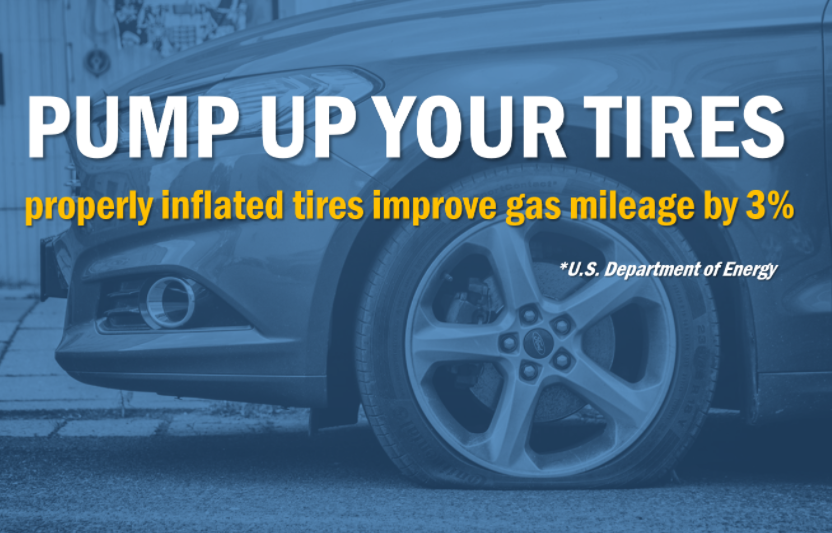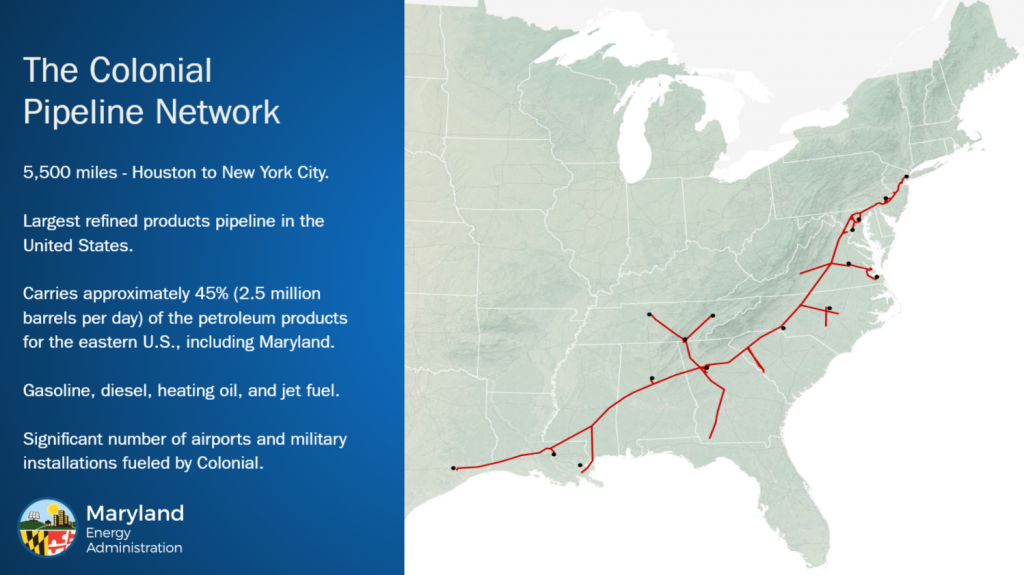Driving Tips to Maximize Fuel Efficiency

By Mike Jones, Program Manager
The topics of energy and resiliency have entered headlines in recent days for all the wrong reasons, with news breaking late last week that a cyberattack forced the closure of the Colonial Pipeline which has limited fuel in some parts of the country. The pipeline is a 5,500 mile long system stretching from Texas through Maryland to New Jersey that transports about 45% of the fuel consumed on the East Coast.

On Wednesday, May 12th, Governor Larry Hogan authorized Maryland Department of Transportation to take emergency measures to respond to the Colonial Pipeline incident and ensure continuity of fuel supply throughout the state. The emergency waivers of weight restrictions and hours-of-service requirements for Maryland motor carriers, consistent with the federal regional emergency declaration. This increased flexibility is key to relieving supply pressures throughout the state, and will help to address transit issues as additional supplies are brought in from out of state.
The system is being brought back online in stages as rapidly as possible with the hope that service would be substantially restored by the end of this week. Until service is restored however, some areas could experience sporadic outages and price increases AAA noting that gasoline prices could rise 3 cents to 7 cents a gallon this week in affected areas. Thankfully, drivers can take a number of steps to help boost their vehicle’s efficiency and thus reduce the need to make a trip to local gas stations during this time of potential disruption. These gas saving measures are a great way to save both time and money and should be incorporated into daily routines, even during times of normal fuel market operations. These tips include, but are not limited to:
- Minimize idling- turning your car off when not in active use can help save fuel.
- Remove excess weight, you reduce your MPG by approximately 1% for each additional 100 pounds added to your vehicle
- Make sure your tires are properly inflated.
- Reduce aggressive driving- constantly stopping and starting on the brake and gas is inefficient and wastes fuel. Plus avoid driving at high speeds where possible- gas mileage drops more rapidly after 50 mph.
- Combine errands, several short trips, each one taken from a cold start, can use twice as much fuel as one trip covering the same distance when the engine is warm.
- Limit air conditioning, since it takes a lot of energy to keep your car cool with the AC compressor.
- If your vehicle has an “eco option”, usually a button on the dash or console, ensure it is activated to allow a modern car’s electronics to minimize consumption.
- Employers can extend telework policies to relieve unnecessary driving for work that can be done virtually.
- If you do need to purchase additional gas for household needs or need to power a generator to protect health or other critical needs, only use a container that meets Department of Transportation (DOT), the U.S. Environmental Protection Agency and Occupational Safety and Health Administration. These cans protect health by reducing vapors while being made of durable, safe materials that are resistant to the fuels they are certified for.
For more information on how to operate your vehicle efficiently, visit the US Department of Energy’s Energy Saver website. Drivers can use resources such as the Gas Buddy Tracker to identify where there may be potential fuel shortages.

 1-888-373-7888
1-888-373-7888 233733
233733